If you’re wondering how to meet your protein needs as a vegan, these 15 simple, protein-rich combinations of plant foods will guide and inspire you! Plus, information on protein recommendations, complete protein, and vegan protein sources, all from a plant-based registered dietitian.
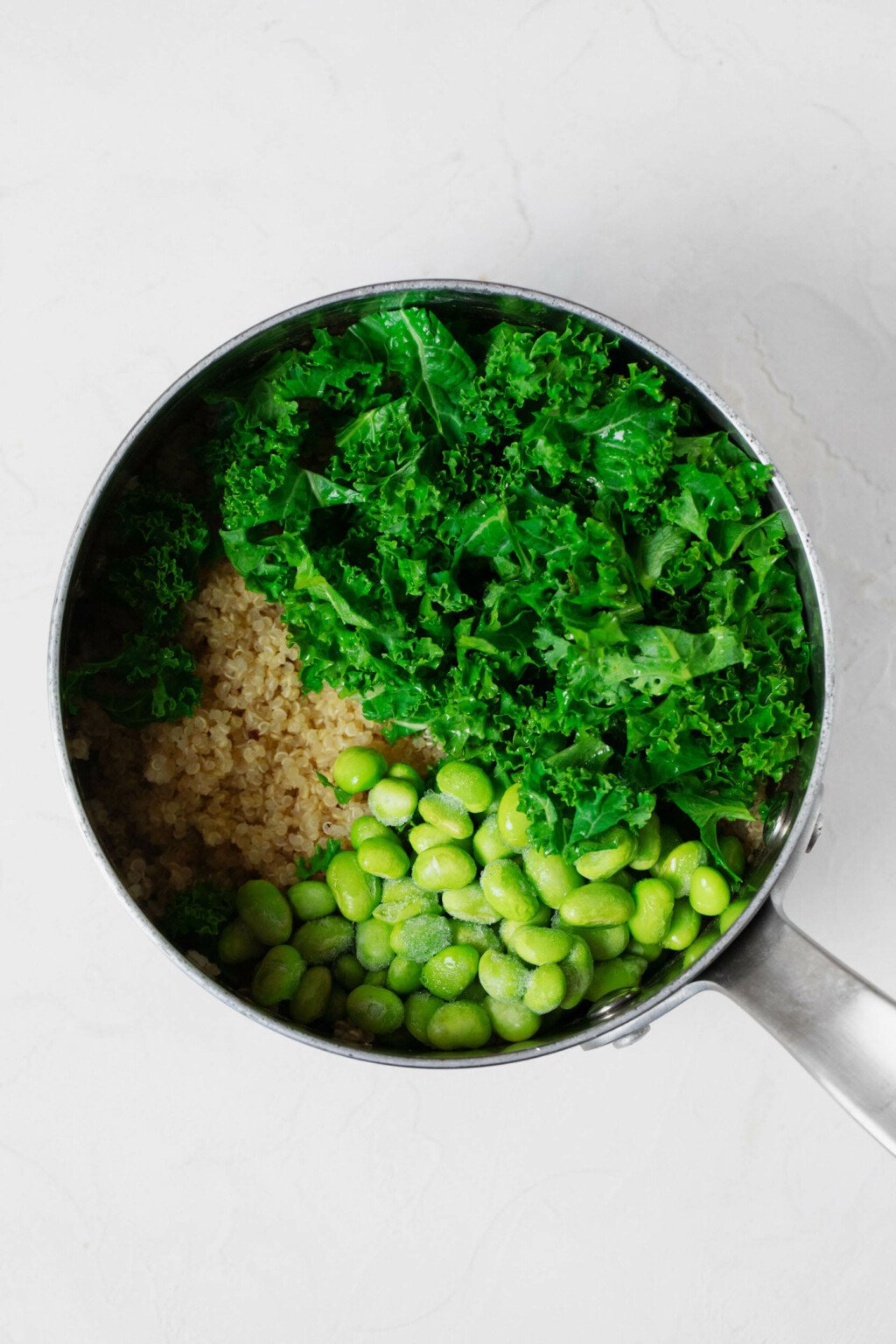
Whether you’re a new plant-based eater, a longtime vegan, or a curious omnivore, there’s a good chance that you’ve wondered about protein.
Specifically, you may have wondered whether vegan diets can provide enough protein. Or you’ve heard conflicting things about obtaining “complete protein” as a vegan.
Maybe you’ve felt confident about your protein intake in the past, but a person in your life—a family member, a healthcare provider, etc.—has recently made you second guess yourself.
In my years practicing as a vegan dietitian, I’ve learned that these are commonplace scenarios and concerns. If you can relate to any of them, this blog post on protein-rich combinations of plant foods is for you.
And if you’re simply a nutrition-focused person who wants to become more informed about plant protein, then read on!
I’ve divided the post into a few key sections:
- Why you may be confused about protein and plant-based diets
- How much protein per day?
- Do Americans consume too much protein?
- Do vegetarians eat enough protein?
- Deficiency vs insufficiency
- Amino acids and complete proteins
- A food-based approach to protein requirements
- Sources of protein for vegan diets
- 15 simple, affordable, and protein-rich combinations of plant foods
- More high protein vegan recipes
Feel free to jump around if a particular section is most helpful for you.
Why you may be confused about protein and plant-based diets (you’re not the only one!)
I’ve been authoring vegan cookbooks, working as an RD, and writing about vegan nutrition on this blog for years.
In that time, I’ve observed two conflicting messages about vegan diets and protein that seem to pervade our culture.
The first message is that it’s very difficult—maybe even impossible—to get adequate protein as a vegan. As you can imagine, this message usually comes from critics of vegan nutrition.
The second message suggests the opposite. It says that getting enough protein as a vegan is super easy—and in fact, vegans shouldn’t be worried about protein at all.
How can there be such different viewpoints on the same question?
I often find that, the more neatly declarative a statement about nutrition is, the more I have to question it. We all want nutrition to be really straightforward. But the truth is that there’s a lot of nuance when it comes to nutrition facts.
My main purpose in writing this post is to assure anyone, plant-based eater or not, that yes, it’s totally possible to obtain enough protein through every day plant foods.
How you mix and match these foods to meet your protein needs, however, will require a little thoughtfulness and planning.
Let me explain, starting with an overview of adult protein needs.
How much protein per day?
Before we examine protein in the context of veganism, it’s helpful to go over protein requirements for adults.
The adult RDA for protein
The Food and Nutrition Board of the Institute of Medicine, National Academy of Sciences, has proposed a recommended dietary allowance, or RDA, for adult protein needs. (1)
This RDA is 0.8 grams of protein per kilogram of body weight, per day, for adult men and women nineteen years of age and older.
The World Health Organization (WHO) has a slightly higher, yet very similar, recommendation: 0.83 g / kg / day. (2)
Let’s apply this recommendation to a real world example.
First, you can see that protein needs are proportional to weight. There’s no standard amount that all people should aim for daily; protein needs vary from person to person.
In America, where I work, most people think about weight in pounds, rather than kilograms.
One kilogram is about 2.2 pounds. If 0.8 grams of protein is suggested per kilogram, that translates to 0.36 grams of protein per pound, per day.
For a woman who weighs 170 pounds, for example, this would amount to 61.2 grams of protein per day (170 ✖️ .36 🟰 61.2 grams).
61 grams sounds pretty achievable, and it is pretty achievable. But there are some added factors to consider.
Digestibility of plant protein
Plant protein is thought to have slightly lower digestibility—meaning that a little less of it gets absorbed into the small intestine during the digestive process—than animal protein. (3, 4)
For this reason, some nutrition professionals, myself included, recommend that vegans use an incrementally higher RDA for protein than omnivores: 0.9 grams of protein per kilogram body weight, per day. (5)
This converts to 0.41 grams per pound body weight, per day.
Using the same example above, a 170 pound vegan woman would aim for 69.7 grams of protein per day—about 70 grams, total.
This is still an achievable amount! And as you can see, there isn’t a significant difference between protein requirements for vegans and omnivores.
Other factors influencing protein needs
There are a few added factors that can influence a person’s protein needs.
Age is one of them. Increasingly, there are researchers and nutrition professionals who recommend higher protein intake for older adults. (6, 7)
The reasoning for this is that it’s harder to maintain muscle mass as we age. A slightly higher protein intake may be protective for muscle mass, as well as for the bone matrix.
Certain disease states, including infection, wound repair, healing from burns, and cancer will all create a need for added protein.
When I was doing my hospital rotations as a part of my training to become a dietitian, most patients were given 0.8 grams of protein per kilogram body weight.
However, I worked with many people who were recovering from catabolic illnesses. These patients required 1-1.2 grams of protein per kilogram body weight each day in order to recover.
What about athletes?
The National Institutes of Health doesn’t give a higher protein RDA for athletes than for the general population.
However, I know from observational experience that many athletes aim for more than 0.8 grams per kilogram daily. They report improved performance and more well-being with this higher protein target.
But wait—don’t Americans consume too much protein?
I’ve seen it in print many times, and I’m sure that you have, too: Americans eat too much protein.
It’s true that protein consumption in most western countries exceeds the 0.8g/kg/day recommendation, and the US is no exception. (8)
NHANES data for 2015-2016, cited in the 2020-2025 Dietary Guidelines for Americans, suggests that most adults meet or exceed the recommended allowance of protein.
In the DGA, proteins are grouped by category. The category in which there’s the most excess—the most overconsumption of protein, compared to recommendations—is meat consumption.
With the exception of meat, though, protein overconsumption is not extreme. (9)
When protein intake exceeds the recommended intake range, it’s by a relatively modest margin. Seafood consumption actually falls below the recommendation, as does consumption of beans, peas, and lentils.
So it does seem that people in Western countries, including Americans, are exceeding protein recommendations on average, especially when it comes to meat. Yet it’s not the case that all Americans are vastly overdoing it on protein.
What about vegetarians and vegans? Are they eating too much—or not enough?
Are vegetarians eating enough protein?
Vegetarians worldwide consume less protein on average than comparable populations of omnivores.
But less by comparison isn’t the same as not enough.
Research suggests that plant-based eaters, including most vegans, get enough protein to meet their requirements.
So long as plant-based eaters eat enough—in other words, they meet their bodies’ needs calorically—they get enough protein, too.(10)
Deficiency vs insufficiency
We know that protein deficiency isn’t a widespread problem for vegans and vegetarians. But is it possible that some plant-based eaters need a little extra, regardless?
Maybe. There’s a difference between deficiency and insufficiency.
Deficiency is a medical problem that comes with known signs and symptoms. There’s often a clear criteria for diagnosis.
When it comes to vitamins, such as Vitamin D, there’s a clear diagnostic criteria for insufficiency, too. But when it comes to macronutrients, insufficiency is a little harder to define.
In spite of the fact that I work with restrictive-type eating disorders, I’ve never worked with a nutrition client who presented with clear signs and symptoms of protein deficiency.
I have, however, worked with people who were probably getting insufficient protein for their well-being.
Some of these folks were actually falling short of the 0.8g/kg/day guideline. Other were meeting the RDA, but they felt better when they ate a little more protein than is required.
“Better” in this context means more energy, fuller hair, more satiety with meals, or more productive workouts.
A small, but growing number of researchers believe that the 0.8g/kg/day recommendation is actually too modest. (11)
Whether or not that’s true, I don’t have a hard time believing that some people just need a little extra.
What about amino acids and “complete” proteins?
I’m often asked whether or not it’s necessary to get a “complete” protein with each meal. This is a great question, and our understanding of the answer has evolved a lot in the past few decades.
Amino acids are the building blocks of human life. They’re also the building blocks of protein: protein is composed of amino acids.
Our bodies can make some of the amino acids that we need. There are nine other amino acids, called the “essential amino acids,” that we have to obtain from food.
Complete proteins, which are also sometimes known as “high biological value,” or HBV proteins, contain all of the amino acids that human beings need to source from food.
Lower biological value proteins, or LBV proteins, are missing one or more of these nine essential amino acids.
Animal proteins, like meat, fish, whey, and eggs, are HBV proteins. They contain all of the essential amino acids.
With plant proteins, there’s variety. Some plant-based foods are complete, or HBV, proteins, while others are LBV proteins.
Here’s a list of HBV plant proteins:
- Quinoa
- Soy (including tofu, tempeh, and edamame)
- Hemp hearts
- Chia seeds
For a long time, common nutritional wisdom was that vegetarians and vegans had to combine plant based foods within meals in order to supply all of the essential amino acids.
The combination of rice and beans is a classic pairing of two LBV foods that together are able to provide all of the nine essential amino acids.
Contemporary research, however, suggests that it isn’t necessary for plant-based eaters to intentionally combine foods at each meal in order to assemble complete proteins. (12)
Vegans do need to eat a variety of protein-containing foods overall, so that their dietary pattern includes all of the essential amino acids.
Plant-based eaters should:
- Eat enough
- Eat a wide array of protein-rich foods over the course of any given week
- Emphasize HBV vegan proteins, like quinoa or tofu, but not to the exclusion of other proteins
A food-based approach to protein requirements
I know we’ve just traveled through a lot of facts and figures and generalizations. But the point of this post is not actually to speak in generalities or populations.
This post is meant to help you.
Given what we know about protein for vegans, how can we help you to get all that you need? Better still, how can we make the process of obtaining adequate vegan protein taste delicious?
The issue with most nutrition recommendations are that they’re either abstract or incomplete.
Let’s go back to our example of a 170lb vegan woman who determines, using the 0.9g/kg/day recommendation, that she needs about 70 grams of protein per day.
The next challenge is to distribute protein intake sensibly throughout the course of the day.
Suppose this woman plans to eat three meals and two snacks daily. This breaks down to about 15 grams of protein with each meal, and 5 with each snack, give or take.
Now there’s a goal for the day and a more specific goal for meals. But the woman in question still has to figure out what to eat in order to get there.
Most of us don’t think in grams of this or that. We think about foods, and the vegan recipes that we’re going to create with those foods.
The question is, how can a person intuitively combine vegan foods to get enough protein within a meal, a day, and a week?
The importance of mixing and matching
When I was growing up, dinner usually looked like a piece of animal protein, a starch of some kind, and a vegetable, nestled together on my plate.
I’m not the only person who was raised on this paradigm, and it continues to inform a lot of the conversation about building a balanced meal.
USDA’s MyPlate, which I think is a pretty good tool, operates along similar lines.
The tricky thing is that, if our first introduction to protein was in the form of a piece of meat, a chicken breast, or a fillet of fish, it can be really tough to figure out what constitutes a protein source on a vegan diet.
Of course there are vegan foods that are inherently high in protein. But many vegan meals end up being rich enough in protein not because of a single food, but because protein-containing foods have been paired together in an impactful way.
This is my main message. It’s great to seek out high-protein vegan foods, but you can also create high-protein meals in the way that you mix and match ingredients.
Speaking of that that, let’s quickly review the protein content of some vegan ingredients.
Sources of protein for vegan diets
When I sit down with a new client, I often provide them with a short list of every day vegan proteins.
I include the number of grams of protein that these foods supply and a suggested serving size, with the disclaimer that serving sizes can vary according to need.
I tell my clients that they don’t have to remember any of it precisely. The goal is just to start developing some mental awareness of how much protein different ingredients contain.
Here’s the list, divided into food groups.
Soy foods
- Tempeh, 3 ounces: 18 grams
- Tofu, 4 ounces: 12 grams
- Shelled edamame, 1/2 cup, steamed: 9 grams
- Butler Soy Curls, 30 grams, rehydrated (about 3/4 cup): 10 grams
- Soy milk, 1 cup (240ml): 8 grams
Grains
- Quinoa, 1 cup cooked: 8 grams
- Farro, 1 cup cooked: 7 grams
- Buckwheat, 1 cup, cooked: 5 grams
- Oat bran, 1 cup, cooked: 7 grams
- Rolled oats, ½ cup dry (or 1 cup cooked): 5 grams
- Brown rice, cooked: 3 grams
- Sprouted whole grain bread (such as Dave’s Killer Bread or Angelic Bakery), 2 slices: 8-10 grams
- 2 ounces pasta, dry: 8 grams
- Couscous, 1/4 cup dry (3/4 cup cooked): 7 grams
Nuts and seeds
- Almonds, 1 ounce (about 1/4 cup), raw: 6 grams
- Peanut butter, 2 tablespoons: 7 grams
- Shelled hemp seeds (otherwise known as hemp hearts), 3 tablespoons: 10 grams
Legumes
- Lentils, ½ cup, cooked: 9 grams
- Chickpeas, ½ cup, cooked: 7 grams
- Black beans, ½ cup, cooked: 8 grams
- Hummus, ¼ cup: 5 grams
- Split pea soup, 1 cup cooked (240ml): 8 grams
Vegetables
- Broccoli, 1 cup, steamed: 3 grams
- Kale, 1 cup, steamed: 3 grams
- Collard greens, 1 cup, steamed: 5 grams
Vegan Meats and Commercial Vegan Egg
- Daring Chicken, 2.5 ounces (about 1/2 cup): 14 grams
- JUST Egg folded, one piece: 6 grams
- Beyond or Impossible Burger burger patties, one piece: 20 grams
- Field Roast Sausage, 1 link: 23 grams
- Tofurky Deli Slices, 5 pieces: 13 grams
- Yves Ground Round, 1/3 cup, prepared: 9g
- Seitan, 2.5 ounces, cooked (about 1/2 cup): 18 grams
Seasonings
- Nutritional yeast, 2 tablespoons: 8 grams
- Yum sauce, 1/4 cup (60ml): 4 grams
- Average tahini dressing, 2 tablespoons: 2 grams
- Amazing cashew queso sauce, 1/3 cup (80ml) = 4 grams
That list is by no means complete, but it includes many of the ingredients that you’ll see often in recipes from my site.
Still, it can be limiting to think about protein only in terms of single ingredients.
15 Simple, Affordable, and Protein Rich Combinations of Plant Foods
As I said above, one of the keys to a well-balanced vegan diet is eating a variety of foods and pairing them together intentionally, in order to create nutrient-rich meals.
With that in mind, here’s a list of protein-rich food combinations, each supplying at least 10 grams of protein and as much as 30.
You may be surprised at how straightforward these combinations are. In fact, you may be eating a lot of them already!
Combination #1: Oatmeal with peanut butter and soy milk
1/2 cup dry rolled oats (5 grams) + 1 cup soy milk (8 grams, used for cooking the oats) + 2 tablespoons peanut butter (7 grams, for topping) = 20 grams plant protein
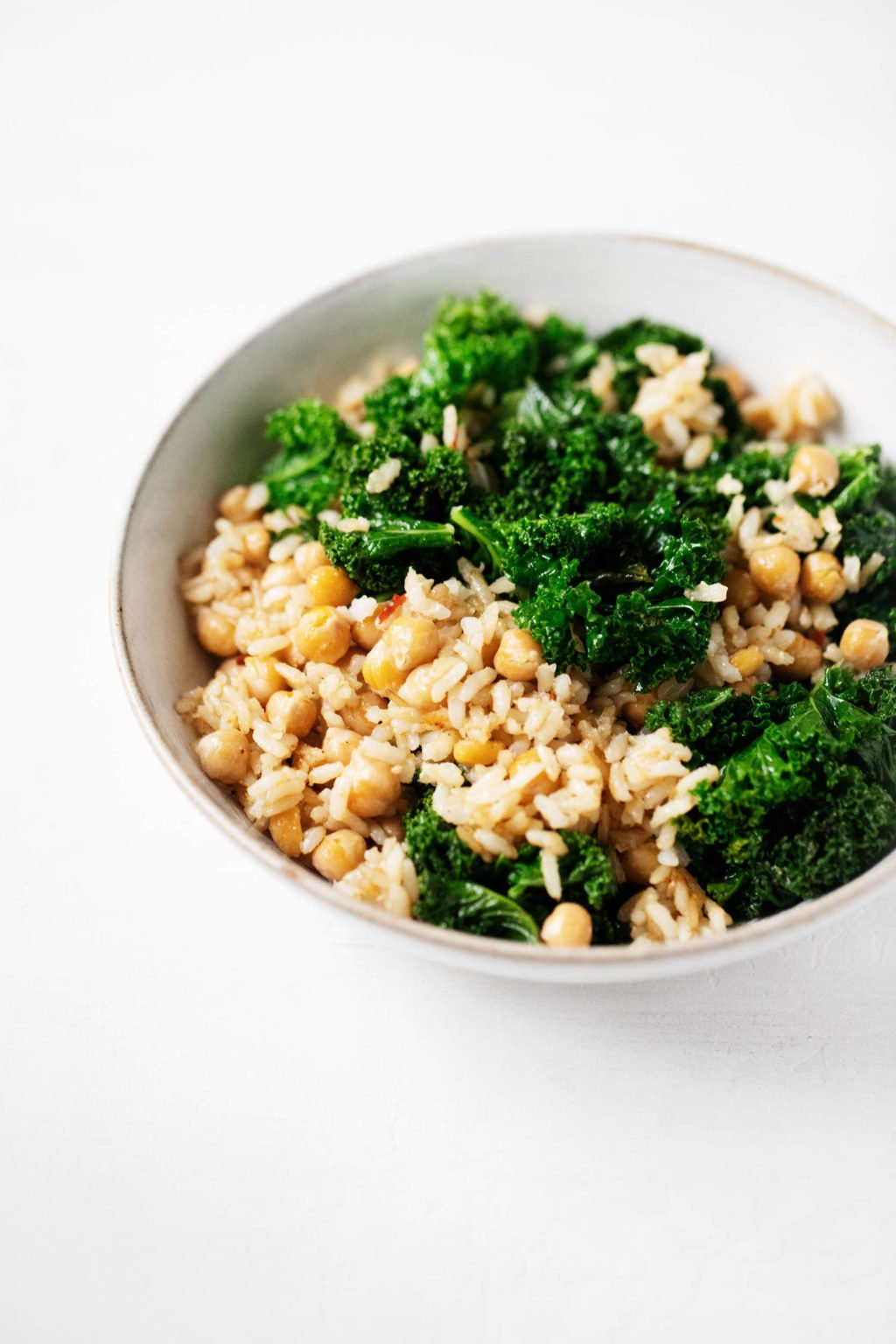
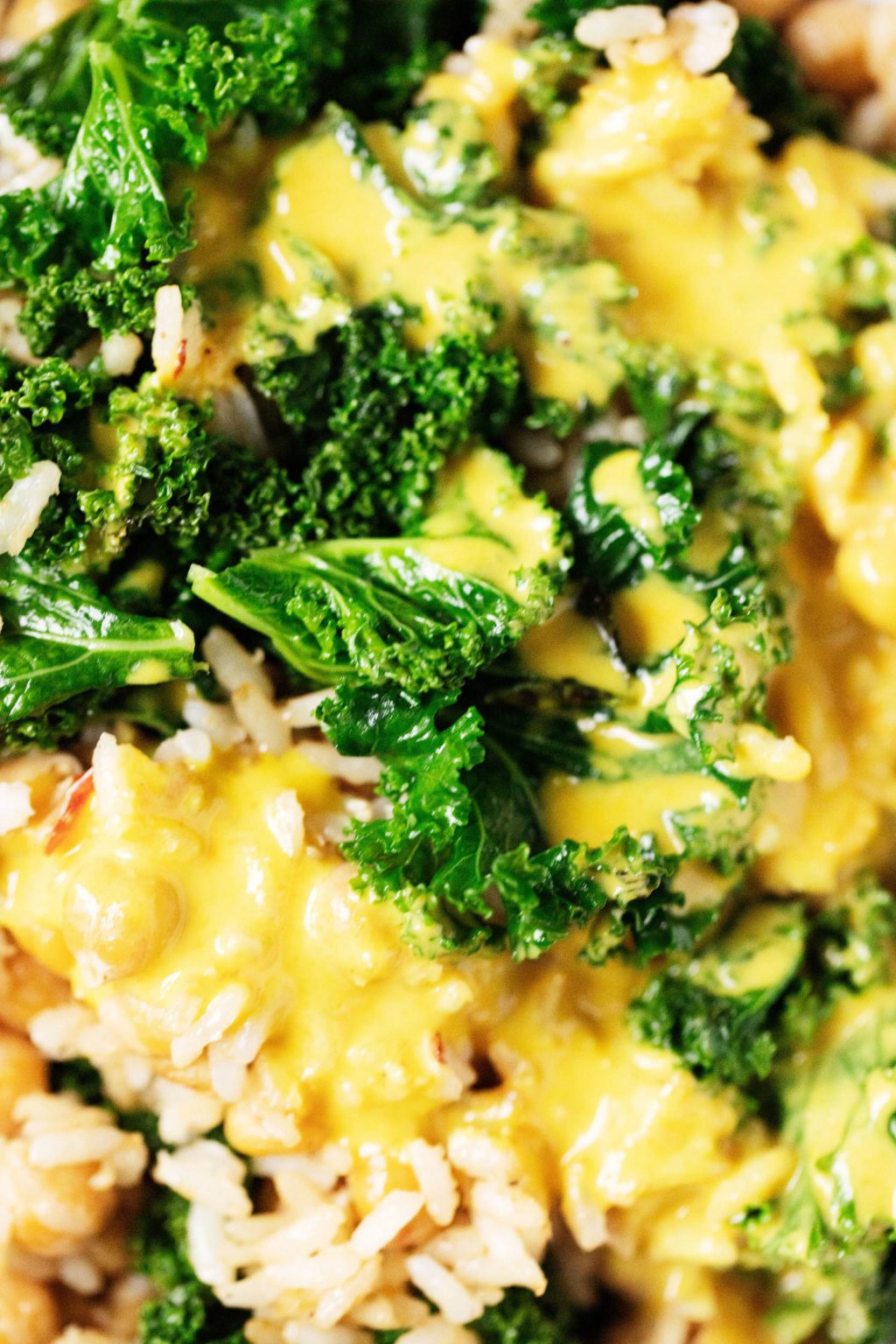
Combination #2: Simple grain bowl
1/2 cup cooked beans (7 grams) + 1 cup steamed kale (3 grams) + 1 cup cooked brown rice (3 grams) + 1/4 cup yum sauce (3 grams) = 16 grams plant protein
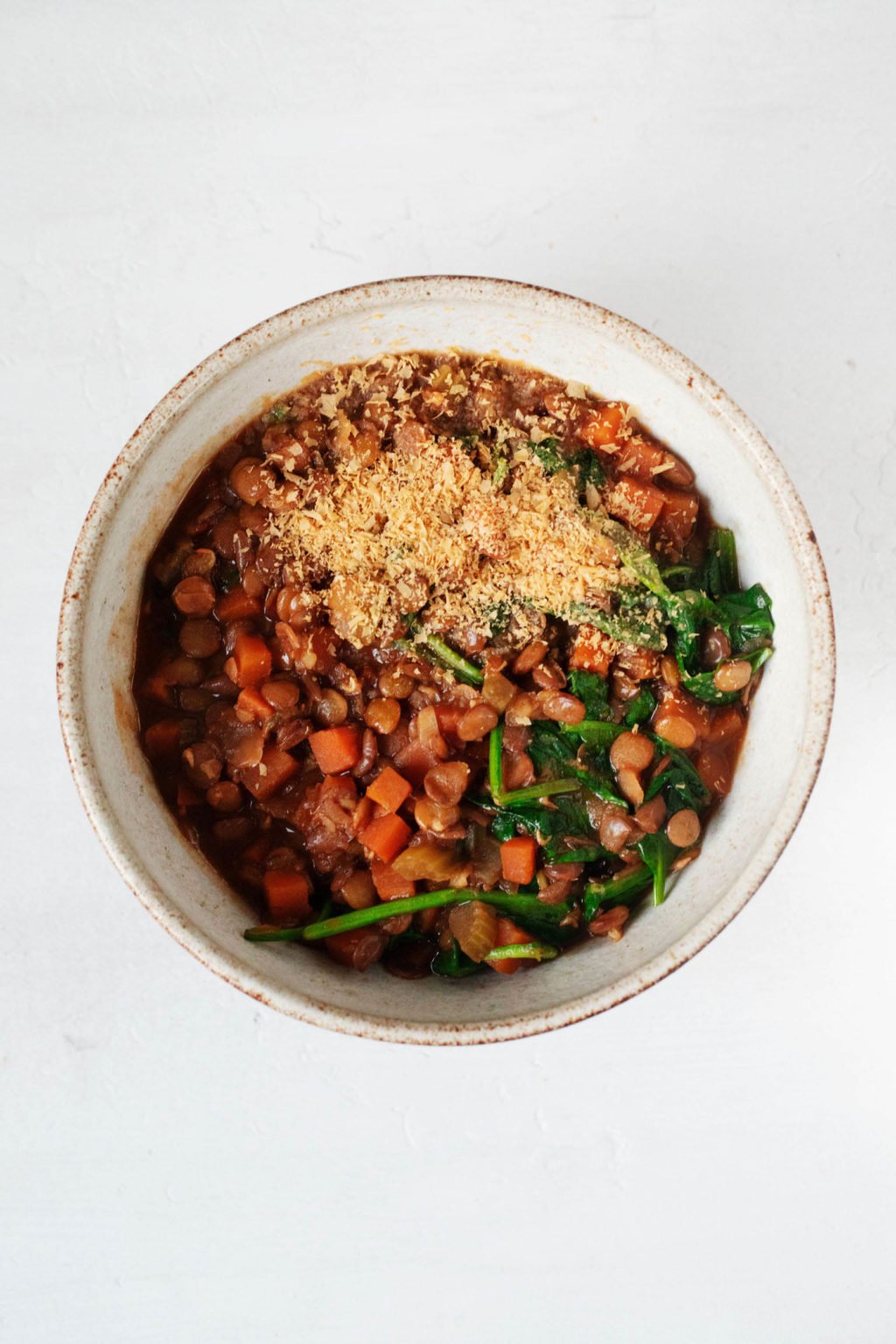
Combination #3: Lentil soup and avocado toast
1 1/2 cups lentil soup (12 grams) + 1 slice of sprouted grain toast (5 grams) with avocado = 17 grams plant protein
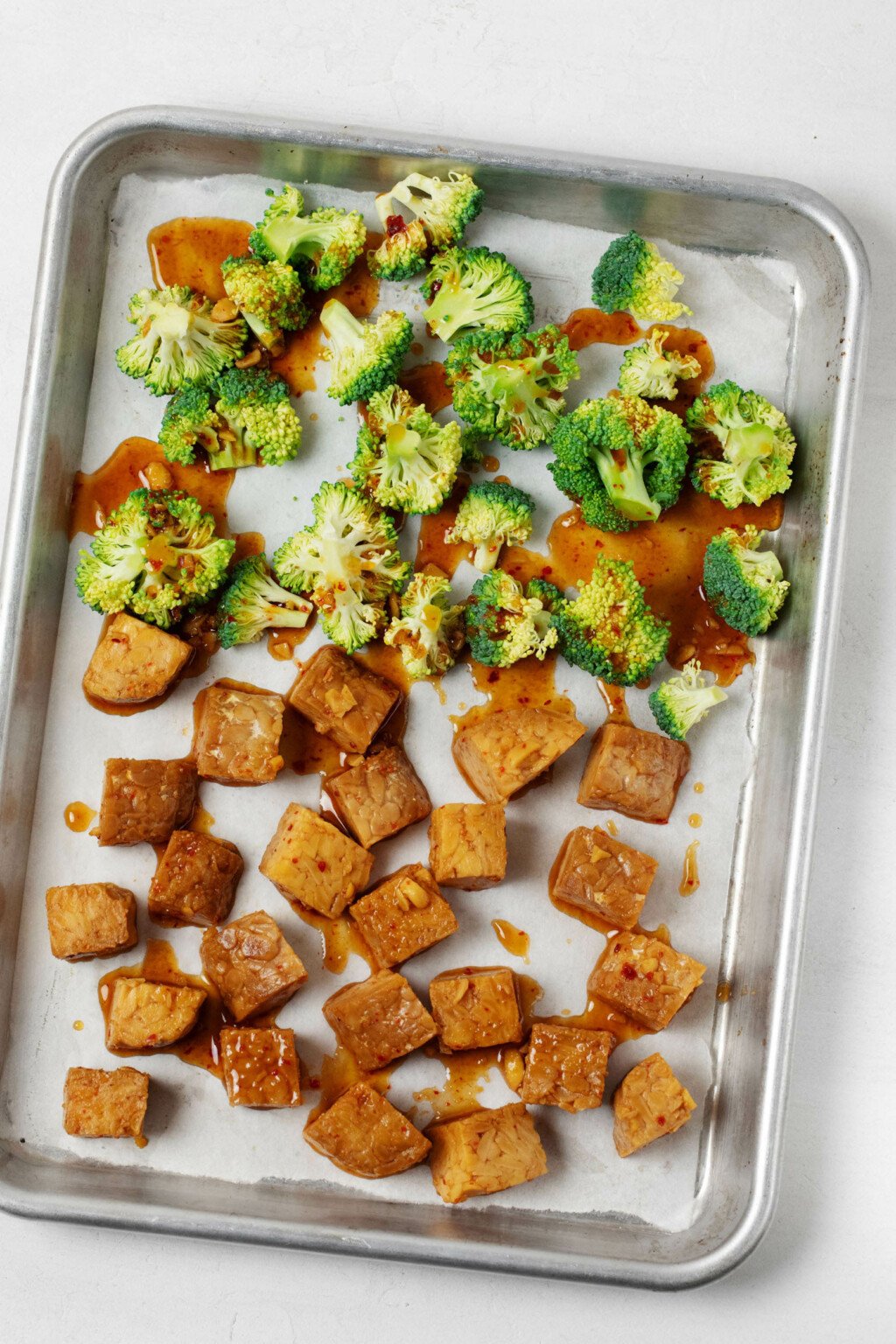
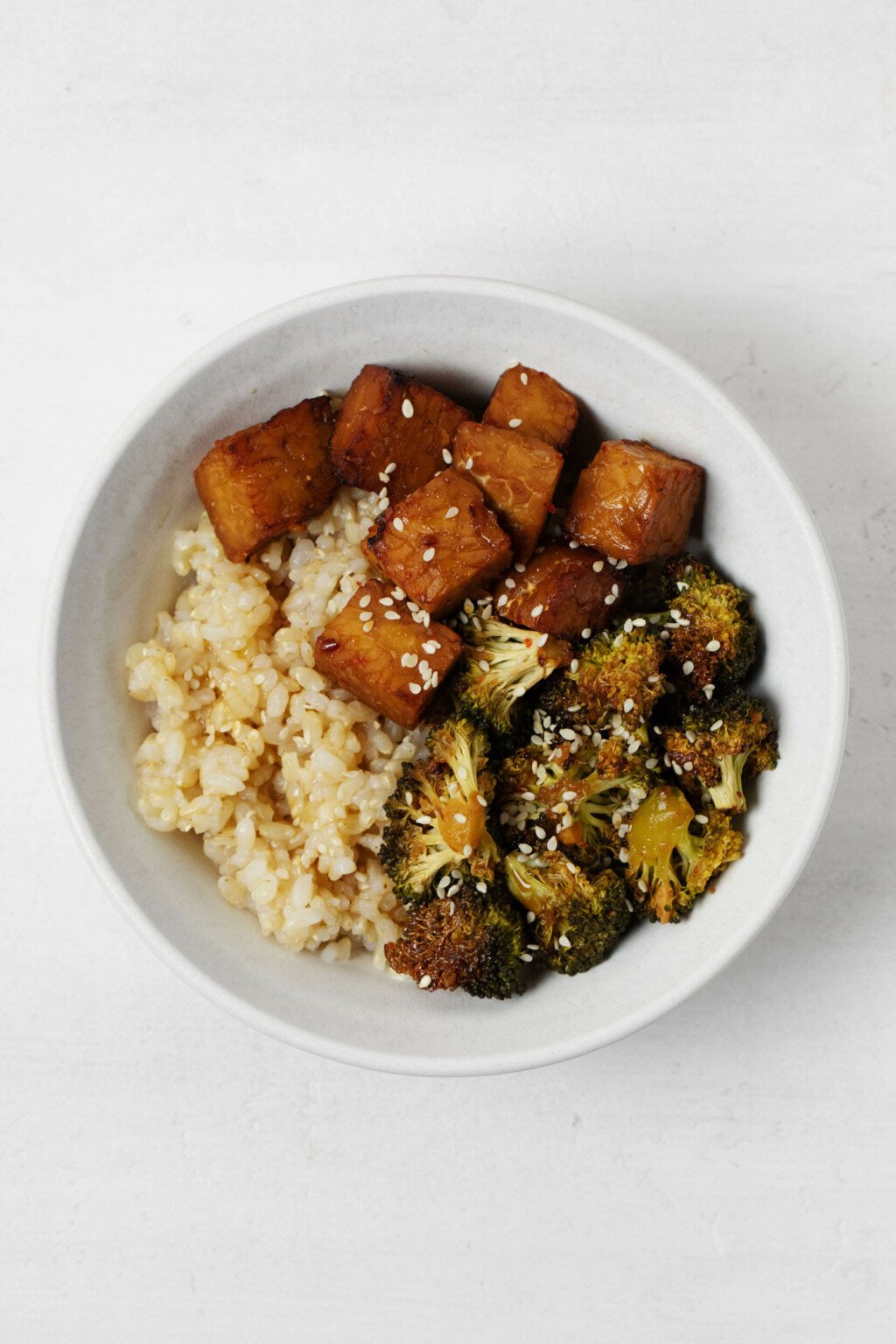
Combination #4: Roasted tempeh and broccoli
3 ounces roasted tempeh (18 grams) + 1 cup roasted broccoli (3 grams) = 21 grams plant protein
Serve with: brown rice, toasted sesame seeds
Combination #5: Sandwich with vegan deli slices
2 slices sprouted grain bread (10 grams) + 5 vegan deli slices (13 grams) = 23 grams plant protein
Serve with: lettuce, tomato, and vegan mayo
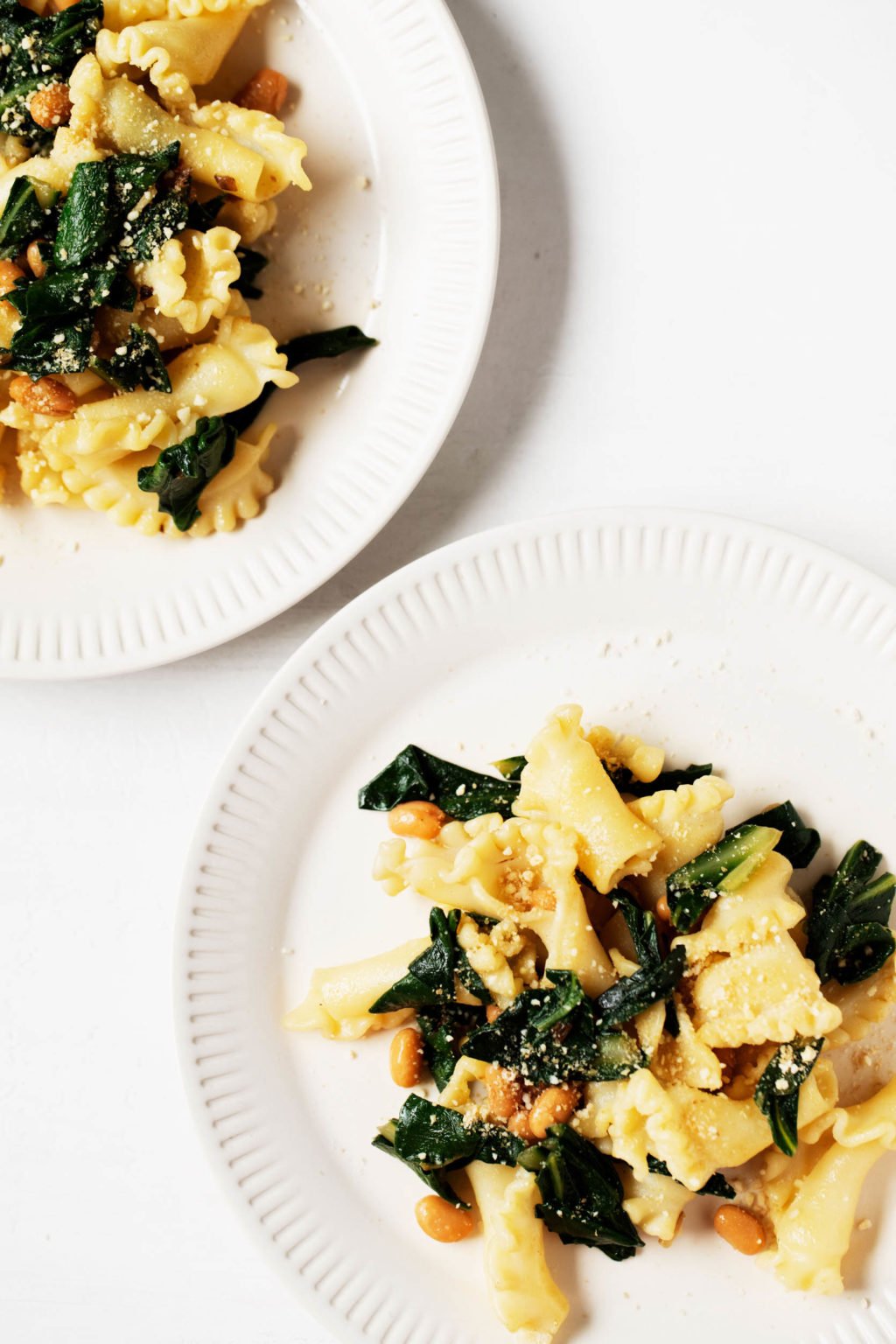
Combination #6: Pasta with beans and greens
2 ounces of pasta, boiled (8 grams) + 1/2 cup canned white beans (7 grams) + 1 cup steamed kale (3 grams) + 1 tablespoon nutritional yeast (4 grams) = 22 grams plant protein
Combination #7: Quinoa and edamame
1 cup cooked quinoa (8 grams) + 1/2 cup shelled edamame (9 grams) + 1 cup chopped bok choy (3 grams) = 20 grams plant protein
Sauté with: avocado oil, soy sauce, rice vinegar, and crushed red pepper flakes
Combination #8: Hummus tartine
2 slices toasted, sprouted grain bread (10 grams) + 1/4 cup hummus (4 grams) = 14 grams plant protein
Top with: cucumber slices, herbs, sea salt
Combination #9: Plant-powered trail mix
1/2 cup roasted chickpeas (8 grams) + 1 ounce almonds (6 grams) + 1/4 cup raisins (1 gram) = 15 grams plant protein
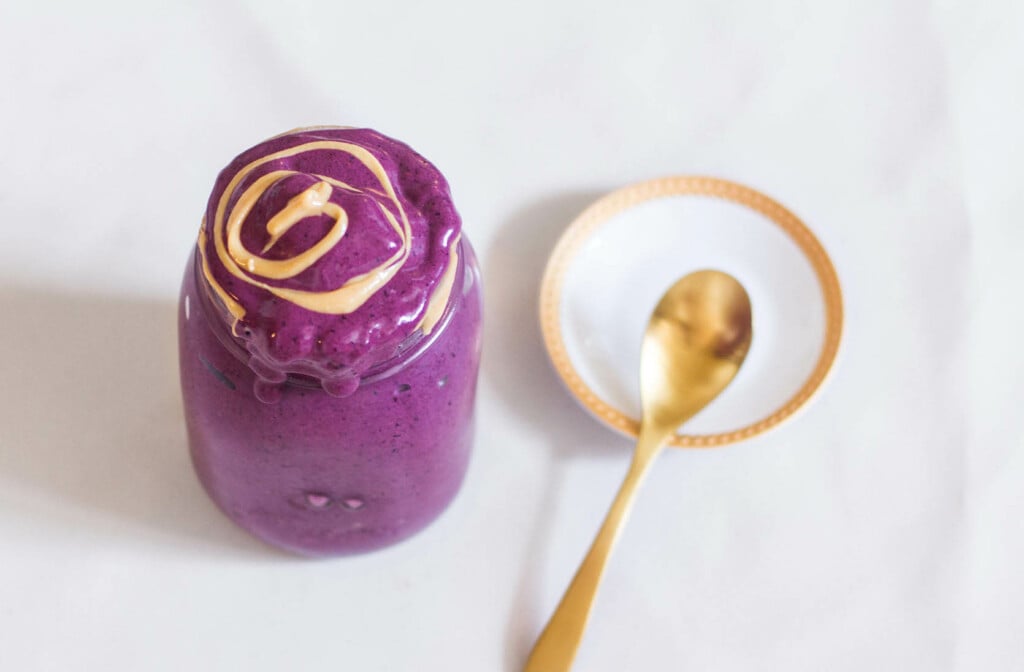
Combination #10: Smoothie with hemp hearts
1 cup soy milk (8 grams) + 3 tablespoons shelled hemp hearts (10 g) + frozen fruits of choice = 18 grams plant protein
Combination #11: Vegan sausage and farro
1 Field Roast sausage (23 grams) + 1 cup cooked farro (7 grams) = 30 grams plant protein
Serve with: sautéed peppers and onions
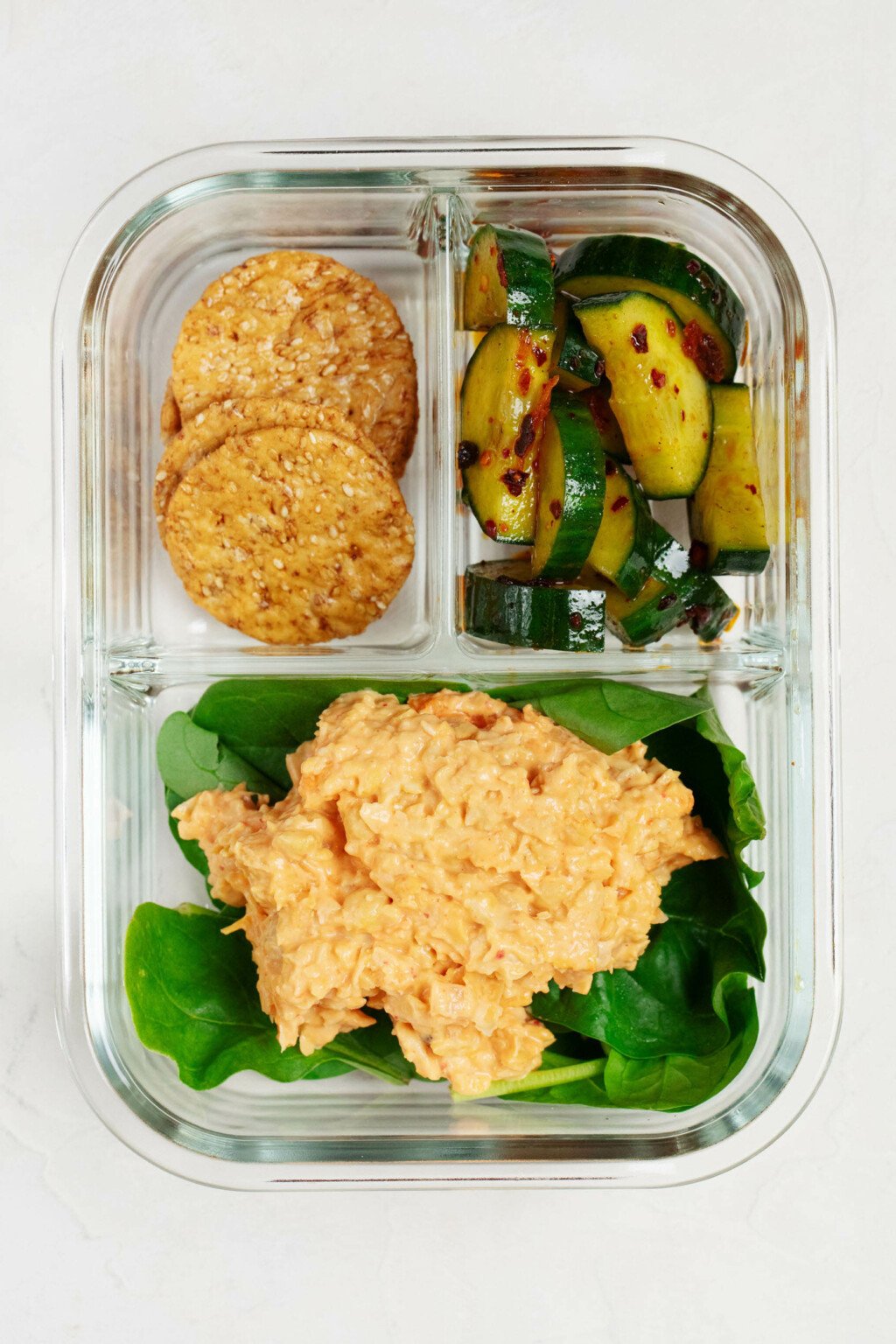
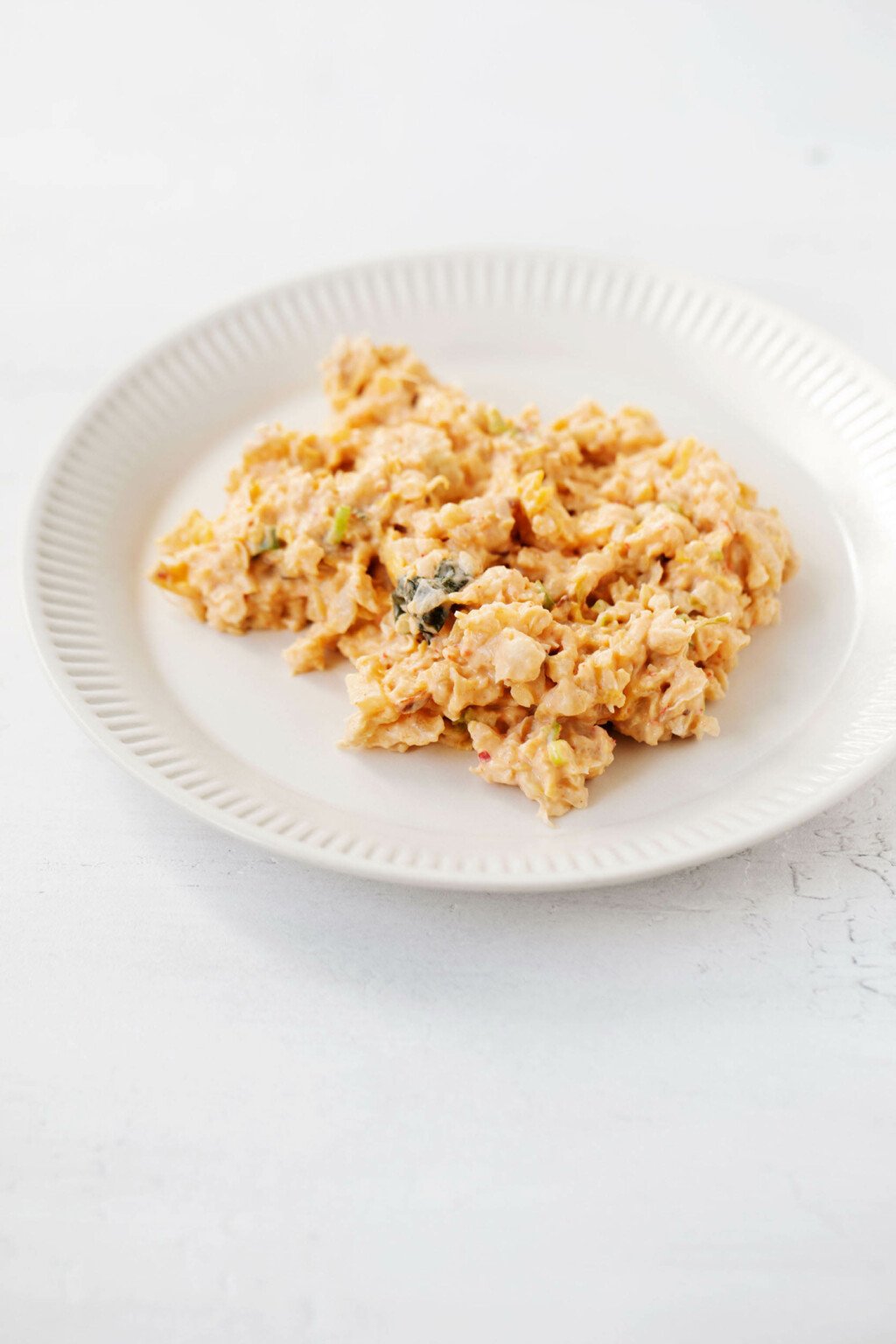
Combination #12: Chickpea salad and crackers
3/4 cup smashed chickpea salad (8 grams) + seeded crackers (5 grams) = 13 grams plant protein
Combination #13: Burger night
1 grilled Beyond or Impossible burger patty (20 grams; substitute a black bean burger for 5 grams) + a sprouted grain burger bun (7 grams) = 27 grams plant protein
Serve with: your favorite burger fixings
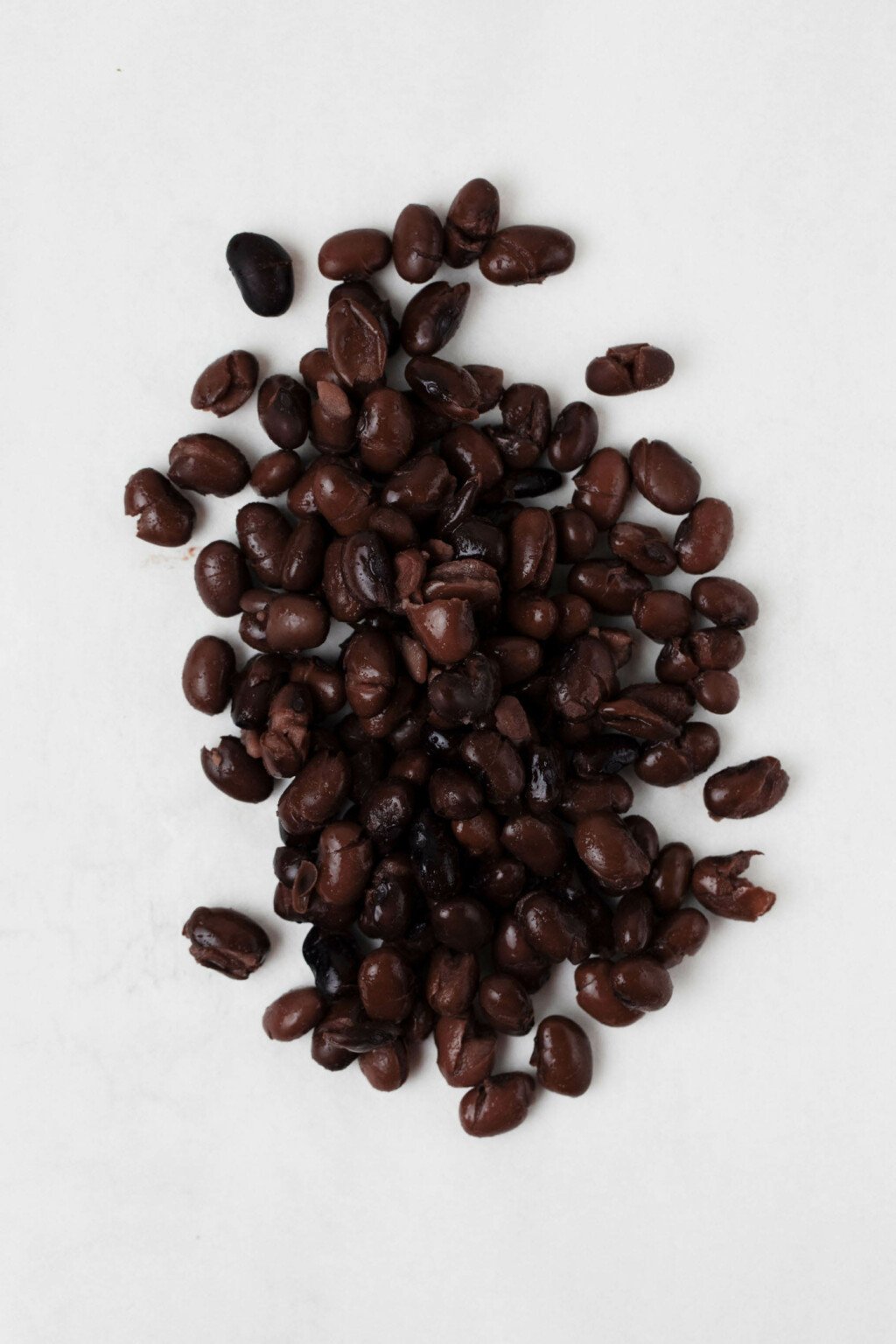
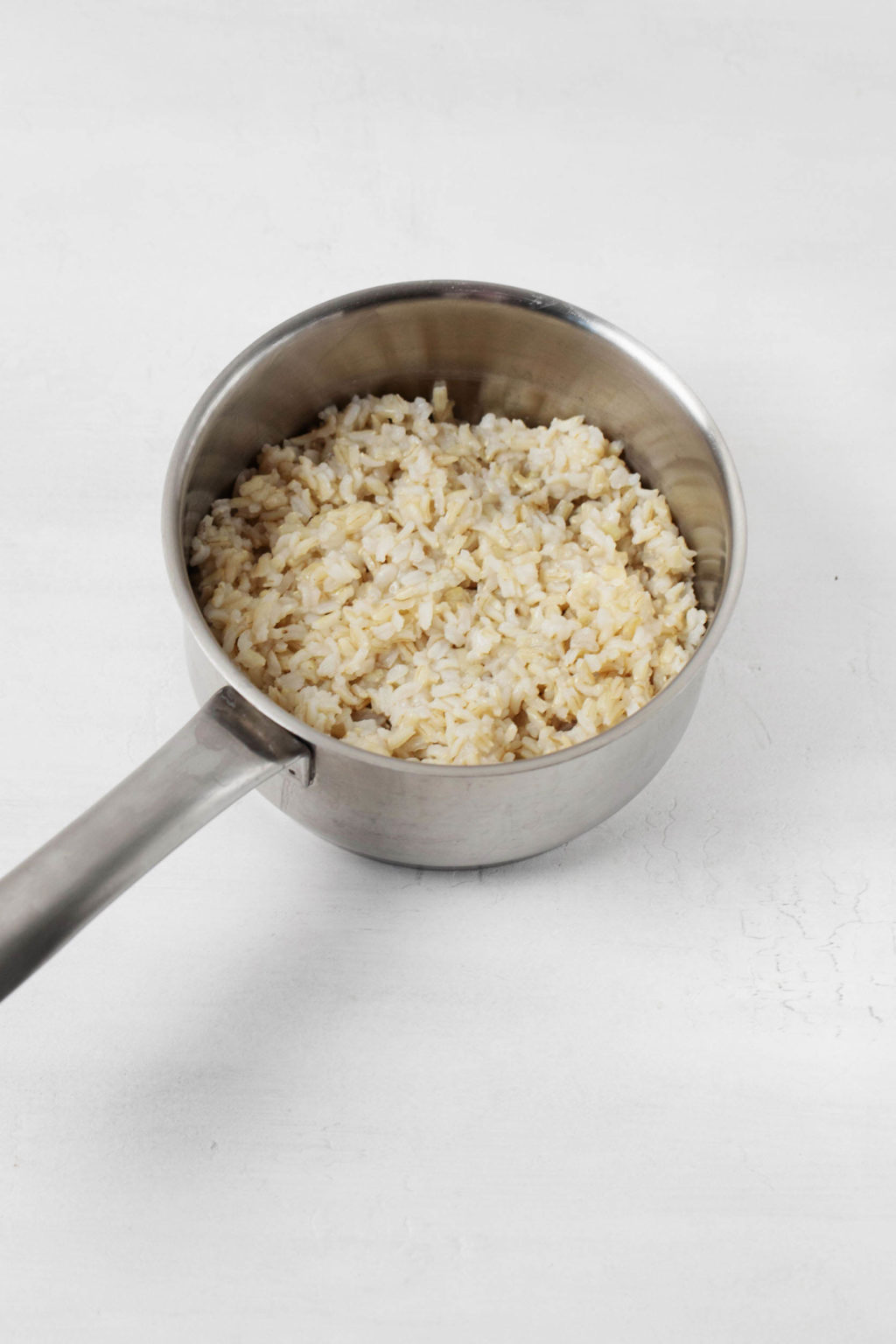
Combination #14: Rice & beans
1 cup cooked brown rice (5 grams) + 1/2 cup cooked black beans (8 grams) + 1/4 cup vegan cashew queso sauce (4 grams) = 17 grams plant protein
Combination #15: Sunday breakfast
1 1/2 cups tofu vegetable scramble (17 grams) + a slice of sprouted grain toast (5 grams) = 22 grams protein
Serve with: a pat of vegan butter for the toast, fruit salad
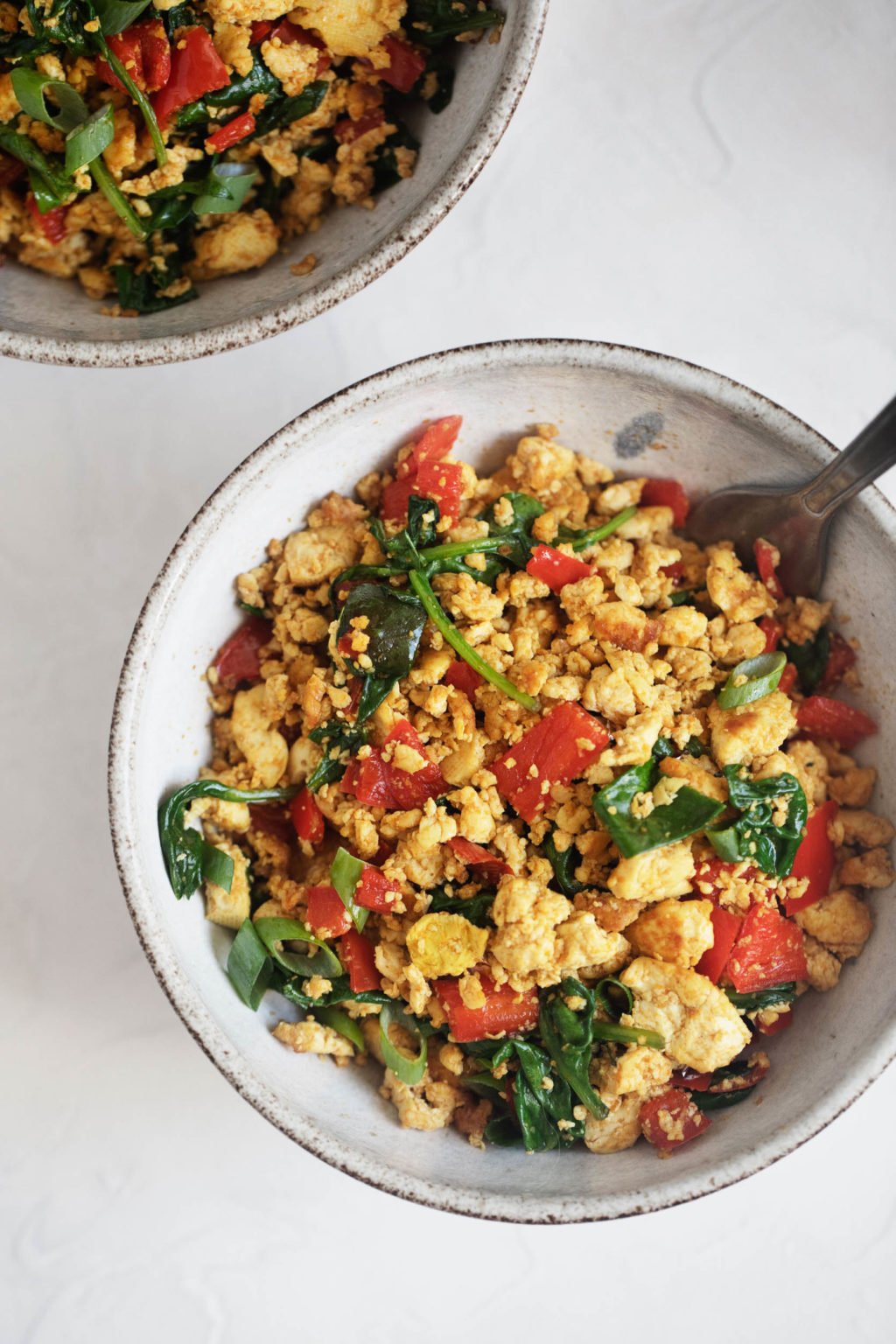
To be honest, I could go on and on with these combinations!
The beauty of learning more about vegan protein sources is that, once you familiarize yourself with the basics, the possibilities for protein-rich means truly do become limitless.
More high protein vegan recipes from this blog
If you love the simple ideas from above, but you’d like more recipe-based inspiration, I have plenty of high-protein recipes in my recipe index.
Here are some of my favorites:
- Vegan Swedish meatballs
- Vegan pasta bake with (tofu-based) ricotta
- Lentil tahini wraps
- Meal prep teriyaki tofu noodle bowls
- Lentil tomato pasta stew
- Vegan spinach lasagna rolls
- Vegan tempeh tacos
- BBQ soy curl sandwiches with cabbage slaw
- Red lentil chickpea loaf with mushroom gravy
- Wholesome mushroom lentil kale lasagna
- Tamari glazed sheet pan tempeh and broccoli
- Savory turmeric chickpea oats
Vegan protein is a topic that can cause a lot of confusion, but it doesn’t have to. Knowledge is power, and it’s also empowering.
The more you understand how to pair protein-rich vegan foods together, the more able you’ll be to get the right amount of protein for you and your unique body.
I hope this post is helpful! Questions, comments, and personal experiences are welcome, as are suggestions based on your own favorite high protein plant food combinations.
xo
References
1. Institute of Medicine. 2005. Dietary Reference Intakes for Energy, Carbohydrate, Fiber, Fat, Fatty Acids, Cholesterol, Protein, and Amino Acids. Washington, DC: The National Academies Press. https://doi.org/10.17226/10490.
2. Weiler M, Hertzler SR, Dvoretskiy S. Is It Time to Reconsider the U.S. Recommendations for Dietary Protein and Amino Acid Intake?. Nutrients. 2023;15(4):838. Published 2023 Feb 6. doi:10.3390/nu15040838
3. Ciuris C, Lynch HM, Wharton C, Johnston CS. A Comparison of Dietary Protein Digestibility, Based on DIAAS Scoring, in Vegetarian and Non-Vegetarian Athletes. Nutrients. 2019;11(12):3016. Published 2019 Dec 10. doi:10.3390/nu11123016
4. Kniskern MA, Johnston CS. Protein dietary reference intakes may be inadequate for vegetarians if low amounts of animal protein are consumed. Nutrition. 2011;27(6):727-730. doi:10.1016/j.nut.2010.08.024
5. Messina, Virginia, and Norris, Jack. Vegan for Life. Da Capo Lifelong Books, July 12, 2011.
6. Bauer J, Biolo G, Cederholm T, et al. Evidence-based recommendations for optimal dietary protein intake in older people: a position paper from the PROT-AGE Study Group. J Am Med Dir Assoc. 2013;14(8):542-559. doi:10.1016/j.jamda.2013.05.021
7. Deer RR, Volpi E. Protein intake and muscle function in older adults. Curr Opin Clin Nutr Metab Care. 2015;18(3):248-253. doi:10.1097/MCO.0000000000000162
8. Mariotti F, Gardner CD. Dietary Protein and Amino Acids in Vegetarian Diets-A Review. Nutrients. 2019;11(11):2661. Published 2019 Nov 4. doi:10.3390/nu11112661
9. U.S. Department of Agriculture and U.S. Department of Health and Human Services. Dietary Guidelines for Americans, 2020-2025. 9th Edition. December 2020. Available at DietaryGuidelines.gov.
10. Mariotti F et al.
11. Phillips SM, Chevalier S, Leidy HJ. Protein “requirements” beyond the RDA: implications for optimizing health [published correction appears in Appl Physiol Nutr Metab. 2022 May;47(5):615]. Appl Physiol Nutr Metab. 2016;41(5):565-572. doi:10.1139/apnm-2015-0550
12. Lynch H, Johnston C, Wharton C. Plant-Based Diets: Considerations for Environmental Impact, Protein Quality, and Exercise Performance. Nutrients. 2018;10(12):1841. Published 2018 Dec 1. doi:10.3390/nu10121841
This post may contain affiliate links. If you use these links to buy something I may earn a commission. Visit my privacy policy to learn more.

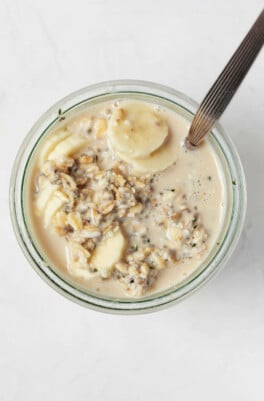
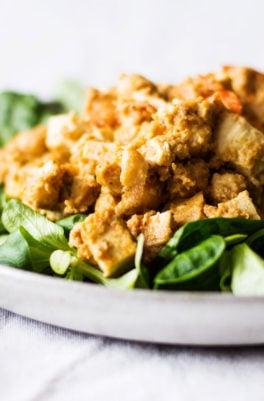


Leave a Comment
Thank you so much for your posts, I find them extremely helpful! Great idea to give exemples and links to recipes to help guide people eating vegan!
I recently decided to stop eating animal based foods. Amazingly enough it has been pretty easy. I am over a week now. My concern is how to mix veggies with beers, rice, nuts to get enough protein. I read what you wrote and find it very useful.
So I will make a list and learn it. I also know that if I eat more protein is OK.
Thanks a lot for the post.
PD: what about barley? Did not see it listed any place.
Barley is definitely a good source of protein, though I didn’t include it! Comparable to wheat or quinoa.
Thanks a lot, love barlely!!!!
Hello,
What can I eat with hemp protein powder and also pumpkin protein powders to make them complete proteins? Say for 30 grams of each powder how many grams of what foods?
Hey Gena! I’m an RD and was looking online for a good compilation of vegetarian protein sources for a client. I’ve read your blog for years and I came upon this post. So great–thank you for making this! How are your nutrition courses going?
Thank you for breaking the foods into grams, I just started counting macros and this will make my life easier. Is eating too much soy really that bad? I limit my soy options to tofu and tempeh (occasionally mock meats), but I’m afraid to eat soy. What do you recommend? I don’t have allergies, I’m just cautious.
I think that soy is an incredibly healthful and important food within the plant based paradigm, Adie. Research points to many health benefits, including anti-inflammatory properties, cholesterol lowering associations, easily assimilated protein, loads of calcium (in fortified brands), and a preventive effect against several cancers.
Of course, it’s wiser to seek out tofu, tempeh, edamame, and other high quality soy foods in lieu of the soy by-products that tend to pervade processed foods, but I also enjoy soy milk, soy yogurt, and Beyond Meat strips.
There is no determined recommendation on servings per week, but several excellent and well researched papers have suggested up to two servings daily can provide health benefits. For the sake of variety among different types of legumes, I’d suggest something closer to 4-6 servings weekly, but that certainly would not be a hard recommendation.
I really do appreciate this post. I think the “where do you get your protein?” question is an entirely legitimate one, and yet, it’s one I learned to scoff at when I got into raw foods some years ago. It’s not hard to get protein on an omnivorous diet, so I do think it behooves vegans, while making the case against eating animals, to tell folks what to eat instead. Because the “detox” version of the vegan diet (no soy, no legumes, no nuts/nut butter, no grains) is ridiculously low in protein and I was keeling over after a few years of it (despite never being very strict about it :-)). Only when I added in protein powder and cooked legumes – both of which I started to crave as soon as I added them back – a sign, I think, that I was missing something they offered – did I regain any sense of normalcy. And now I’m eating oatmeal too, and higher protein nrg bars (one by Go Macro that I like).
The thing is, you do feel initially do much better on the detox diet – because digestion improves so much – that you don’t notice when it stops working and you’re wasting away – you almost don’t believe your own symptoms. At least that was my case. I’m a bit older too, and I think you just don’t get away with eating badly when you’re older like you do when you’re younger. I also ended up deficient in B12 (which I corrected with Now Foods liquid B12 in less than a year), vitamin D (harder to build back, so still supplementing it) and iron. My ferritin levels were 9 (not kidding – and I was never 100% vegan – always included some dairy). I’m taking a supplement called MegaFood Blood Builder about which I can’t say enough good things. The only supplement I’ve every taken where I could feel the difference, almost immediately. Not surprised at all to discover it’s MegaFood’s most popular product.
I still have to pay attention to make sure I”m getting enough protein because if I just eat the way I’m inclined (smoothie, juice or tonic in the AM, some kind of energy bar with tea or fruit for lunch, salad for dinner, I don’t get enough. And I do feel it.
Thank you for your suggestions. I will purchase the MegaFoods product. My platelet count is low, so I’m hoping it might help.
Gena, Thanks so much for posting this! I’m a CrossFit Level 1 trainer and I often get questions from athletes that are vegan or vegetarian and trying to figure out what their protein options are. Although I’m not a vegetarian, I practice a plant based diet, as well. This was great info! I’ll be passing this on to my clients, and using this info in my home kitchen too!
Than you so much, Rachel! I’m glad you found the list useful.
I’m glad I found your blog through Food 52. I am A nutritional therapist student and a new plant based water. All these informations are very helpful. Good luck with the upcoming book
Thanks Mira! Kind of you to stop by 🙂
Great information, Gena! Thanks for putting this up! This will definitely help a lot of people especially those who are looking to improve their eating habits.
This was a great post, Gena! Thank you for the combination ideas as well as having the science to back all of it up. I really enjoy reading posts like these because I can immediately incorporate them into my life and diet! Thank you!
You are so welcome, Alex! Glad that this is helpful.
This is a great list! My favorite source of vegan protein is definitely edamame… I love steaming the beans then dipping them in tamari! 🙂
Hey Gena,
This is soo helpful. Such a simple but actually innovative way of presenting this info to people.
I was wondering what the situation is for underweight people – should one eat protein for one’s actual weight or for the roughly-bmi-20 weight?
xxxxxxxxx
Hannah, the common recommendation is that underweight individuals emphasize protein, so aiming for an appropriate amount for a BMI of 20 is probably sound. I’ve seen recommendations for underweight people as high as 1.5-2 g / kg body weight, though there is some conflicting opinion on whether or not this amount is necessary or advisable. Glad you like the post!
Thanks for this Gena! I’m going to share it with a WFPB Facebook group that I’m part of. There are quite a few people that are new to plant-based eating there and the protein question comes up a LOT.
Could you write a post on women and anemia? Because I’m vegan, the automatic assumption is that my iron levels would be fine if I “just ate a steak”. Thanks in advance!
I think anemia is a great topic for another post, Terri!
And thanks for sharing the post with your group. I hope it’s useful.
Great post! Thanks for sharing this!
Wonderful post, Gena! I’ll be sharing this one widely 🙂
Thanks so much, friend!
Gina…as always, another amazing post.
Thank you, for all that you do and share with us.
Hey! Great and informative post.You mentioned that plant based proteins are more difficult to absorb than animal proteins, I believe this is called bioavailability, Could you make a top 3-5 plant proteins that have the highest bioavailability? Thanks! 🙂
Bianca, I’m not actually sure about precise foods and how they stack up to others. I’ll look into it, though.
Good post, Gena–I always like learning new factoids, and somehow it has escaped me till now what a powerhouse of protein edamame is–wow–thanks! And I totally agree protein powders are fine, but not at all essential to getting enough protein. Thanks! xo
I love edamame as a protein source, Maria. It’s a great snack! Glad you like the post.
Gena, this is really helpful ! The combinations make sense recipe-wise as well. I have a few questions though !
1) (and this one might seem stupid but I really don’t know how to cook) For cooked grains, does it mean it’s half the amount dry ?
2) What research have you found about consuming protein immediately after working out – is it really imperative to say, have a protein shake or legumes within 30 minutes or is that just more health BS I’ve read from the internet ? I’m just curious if you’ve stumbled upon any discussion about that.
3) I’ve also heard that your body cannot process too much protein at once…is that true ? Sometimes I’ll make a vegan shake with Vega powder for instance and it could easily be 35-40 grams (including PB, flax, etc) !
Hi Hannah!
1. The amount of grains is cooked grains, though I’m sorry that I was confusing in photographing dry grains 🙂
2. I don’t really have a strong opinion about protein consumption after workouts — I tend to think that if you’re consuming adequate amounts overall, the timing isn’t super crucial. A fitness coach or RD with a specialty in sports might have much stronger opinions than me, though.
3. I’ve heard that as well, though haven’t done too much reading on it. Intuitively, that’s one of the things that doesn’t feel totally sensible about heavy reliance on protein powders — you can get so much more at once than you’d get through food — but again, I certainly don’t have a problem with them so long as there’s balance. I wouldn’t worry about your shakes — sounds as though they’re full of some great ingredients.
Hope this helps, lady!
x
This is very handy. Thank you:)!